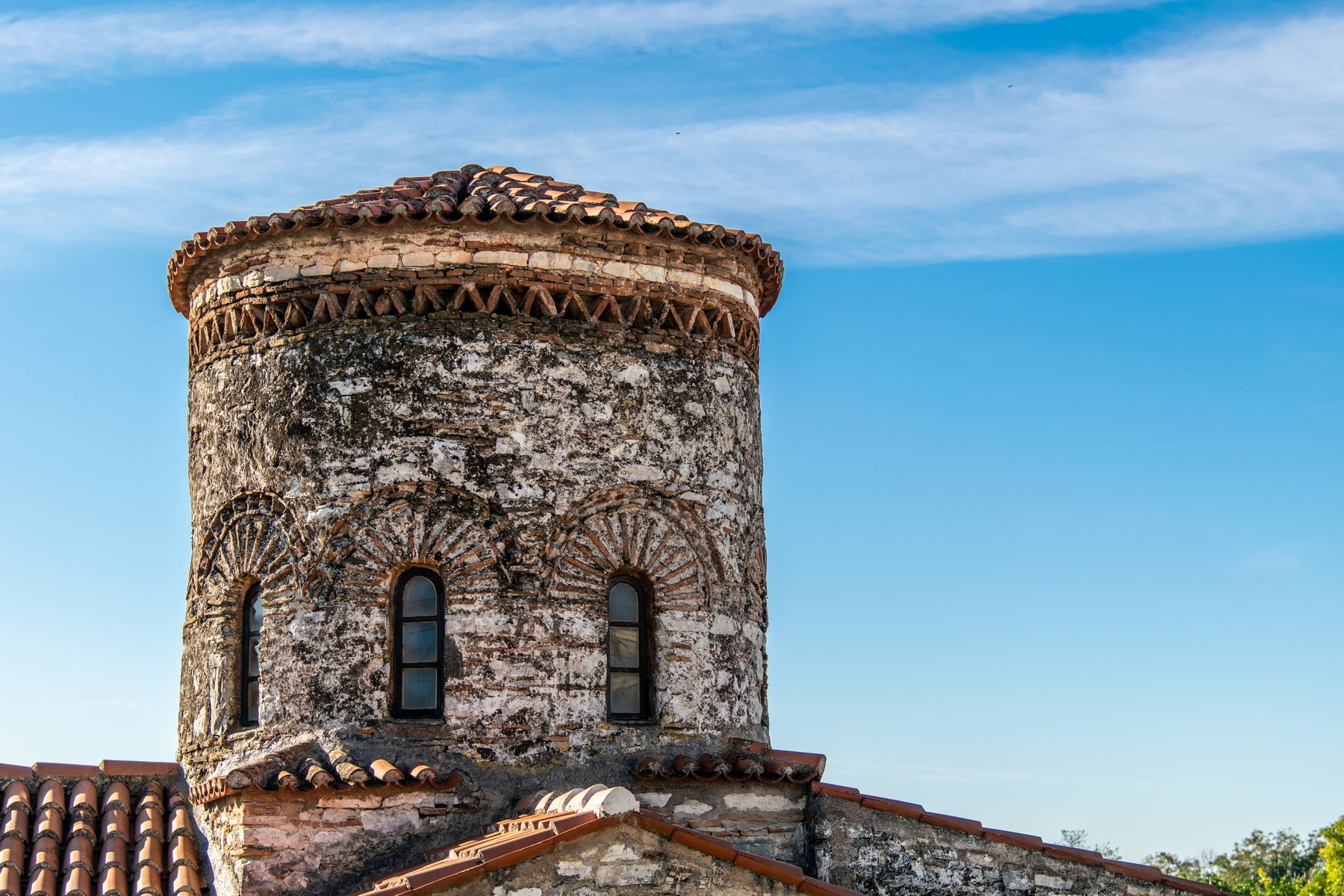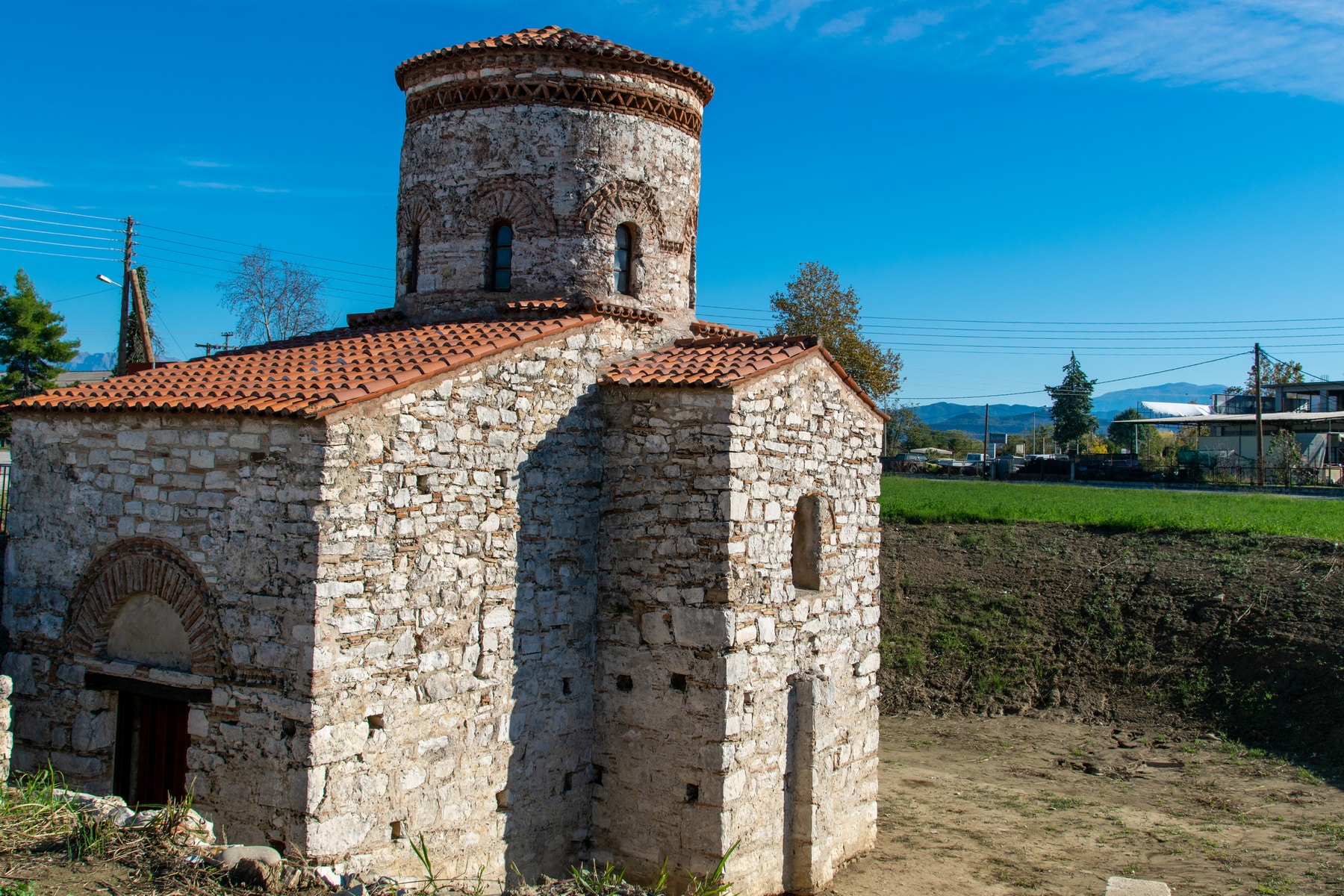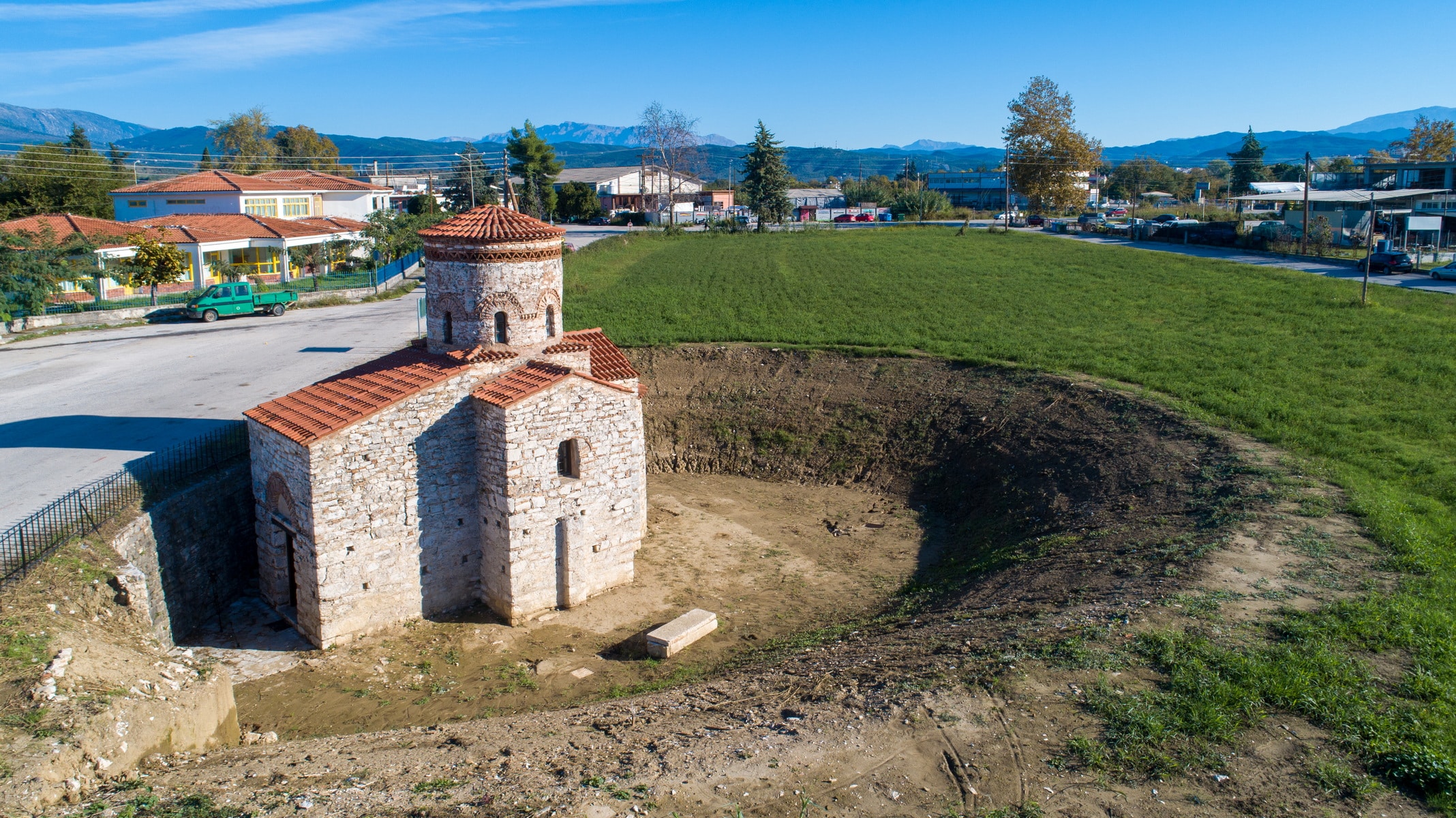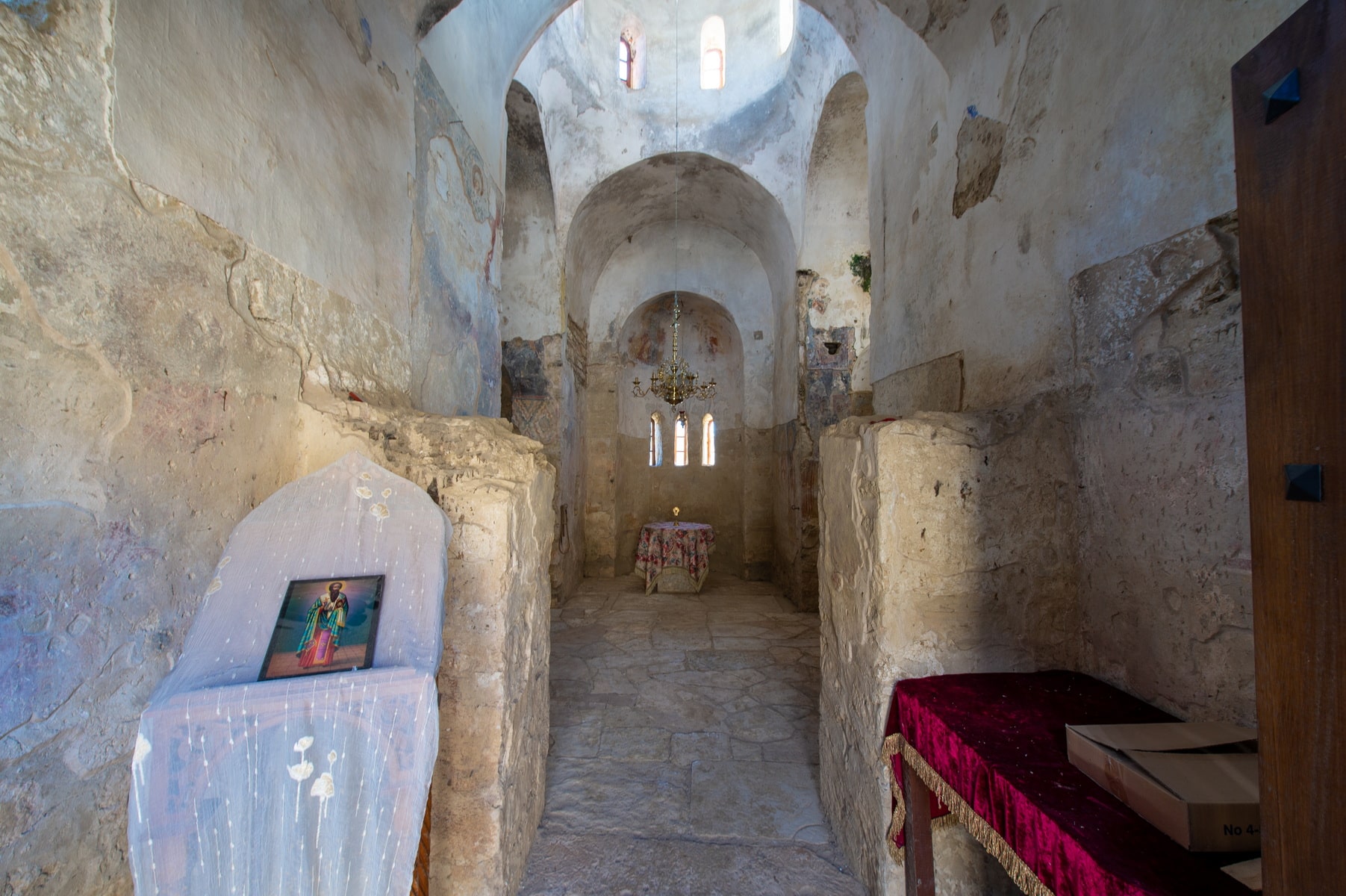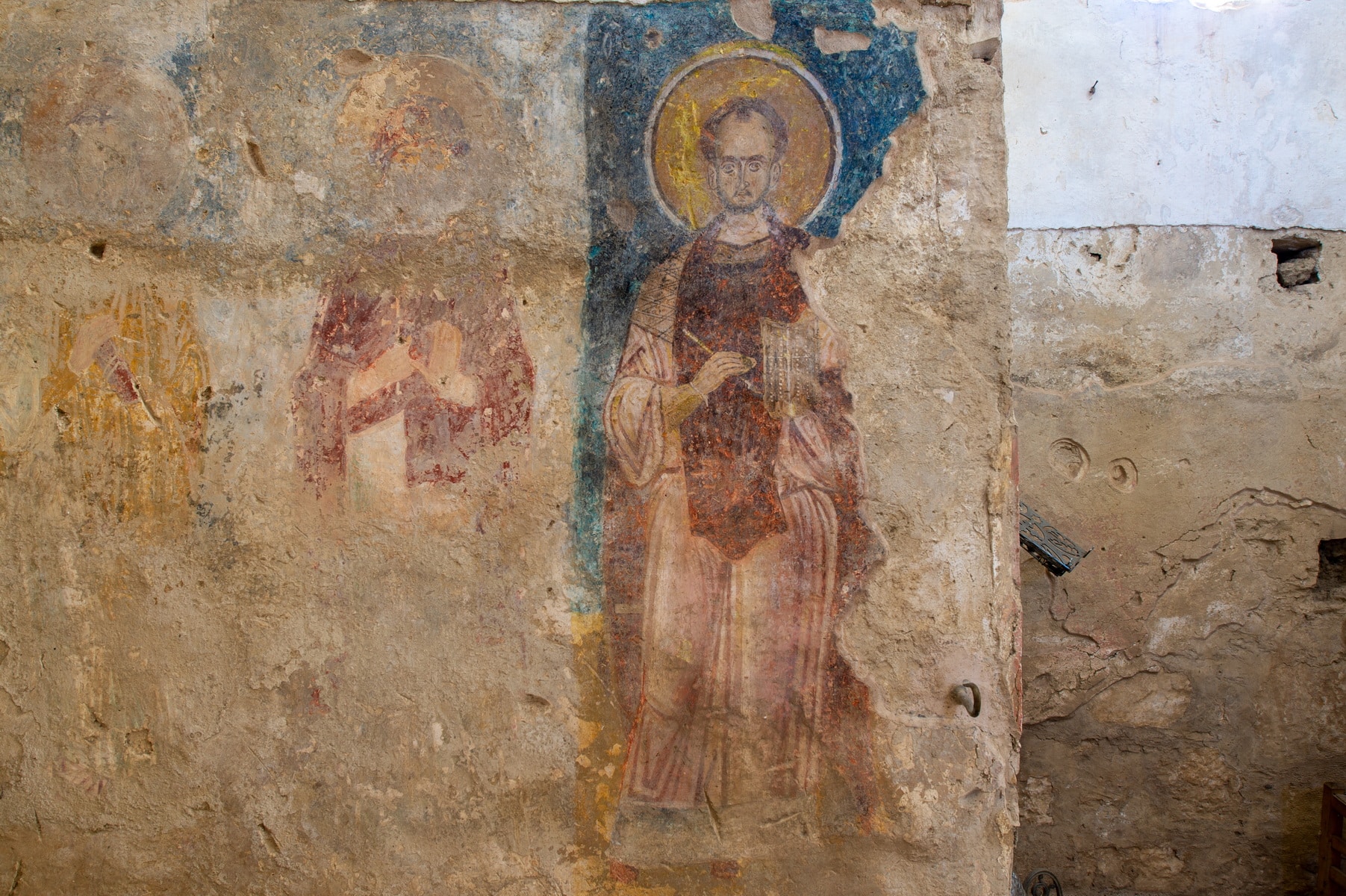The Byzantine Church of St. Vasilios of the Bridge is located in Top Alti, a place name meaning the area within the firing range of the castle’s cannons. It received the nickname “”Bridge”” because it lies only 1 km from the historic bridge. The nickname also differentiates the church from the one of St. Vasilios of Agora.
The first written reference to the monument comes from Seraphim Xenopoulos or Byzantio, Metropolitan of Arta, in the 19th century. It is mentioned that the church of St. Vasilios of the Bridge was initially the monastery’s katholikon (central church building), renovated in 1632 by the monk Theoklitos. In 1821 it functioned as a parish church, while in 1852, D. Vlachos, a resident of Arta, altered the monument. Built on the bank of the Arachthos River, the temple was vulnerable to damage and was sometimes earth-coved by the river. In the 20th century, it was covered at a depth of up to 2 meters. Archaeologist P. Vokotopoulos carried out excavation and unearthing works in 1969-1970, studied the monument, and dated it to the second half of the 9th century, correcting its original dating in the 15th century. The church is one of the early monuments of mid-Byzantine times that dates back to the era before the establishment of the Despotate of Epirus, along with the Virgin Mary of Koronisia, Saint Paraskevi of Drakos, the first phase of the church of Aghia Theodora, etc.
Architectural elements: The church has been built in the type of the free cross like the later church of Saint Paraskevi of Drakos. An imposing, cylindrical dome with a conical roof rises at the point where the antennas of the cross meet. According to archaeologist G. Velenis, the upper part of the dome is the result of a later construction phase. This explains its somewhat disproportionate size in relation to the temple. The monument’s floor plan is completed with the square narthex to the west, which extends the vertical antenna of the cross. The narthex is separated from the main temple by two pillars. The arch of the sanctuary is circular and has a trifora window. The roofs’ arches are covered externally with double-pitched roofs on the north and south part and a single-pitched roof on the western part of the main church and the narthex.
The church’s entrance lies on the west side, while the stone floor was created in 1969. Cist graves in the north, south, and west parts of the cross came to light during the excavations. The Holy Altar is also a newer construction.
Exterior decoration: The masonry consists of irregular stones with pieces of bricks or tiles inserted between them, mainly in a horizontal arrangement. The masonry is adorned with ceramic decoration seen in the dome and the eastern arch. Specifically, the arched windows of the dome are defined perimetrically with brick arches, surrounded by a serrated band. A zone consisting of diagonal plinths surrounds the dome a little higher, while a serrated band adorns the window of the arch.
Painting decoration: Four layers of frescoes, painted in different eras, were discovered after the excavation of the church in 1969-1971. According to research, the first temple was not frescoed. It was illustrated for the first time in the second half of the 13th century and after its embankment. This first decorative phase is seriously damaged, but a large part is still preserved, such as the sanctuary’s frescoes with the dominant figure of Our Lady of the Sign, framed by two angels. The figures of a saint, two hierarchs, and an equal number of deacons are also found on the trifora window’s wall. Stefanos, the first martyr, is depicted on the left. Iconographic themes with full-length frontal saints, such as Panteleimon, Kosmas and Damianos, etc., have also been preserved.
The second phase dates to the 16th century. A monumental, full-length figure of the blessing St. Vasilios belongs to this phase. The two newer phases date back to the 17th century, and they include representations such as Saints Constantine and Helen, the baptism of Christ and figures of full-body, and on horseback Saints.



